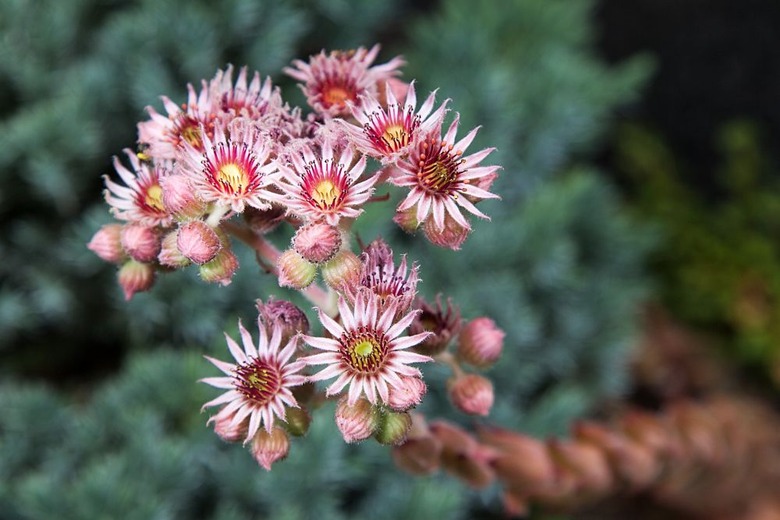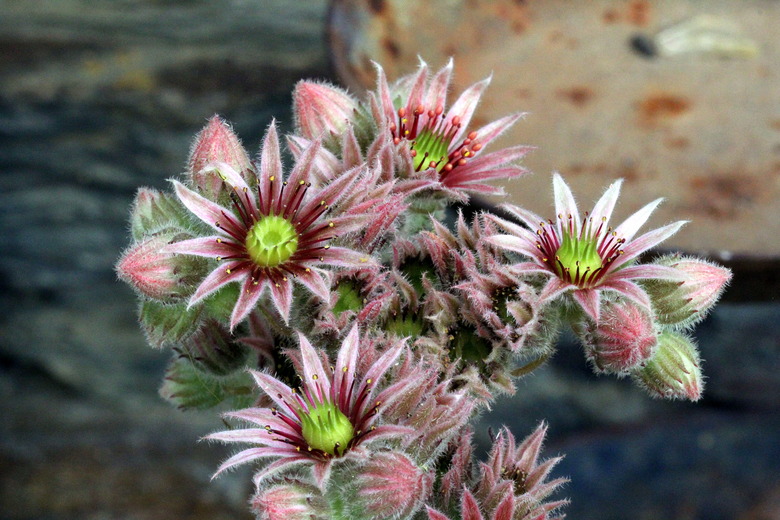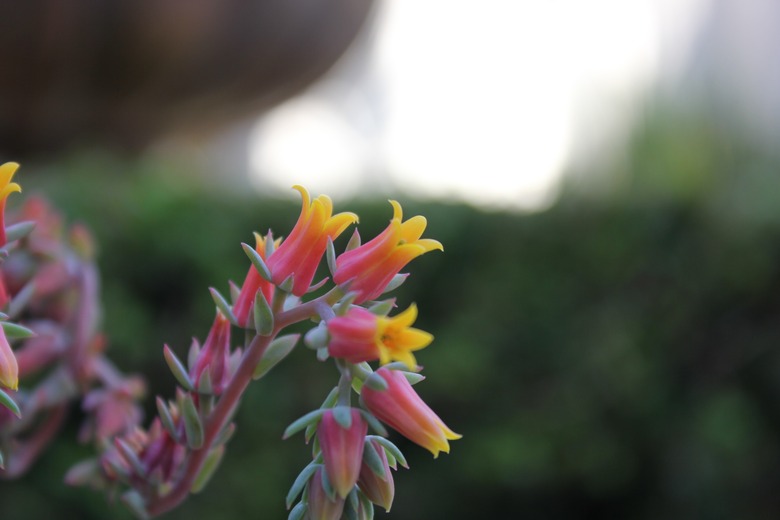What Do You Do After Flowers Bloom On Hen And Chicks?
The common name "hen and chicks" refers to several species of succulents—plants with thick, fleshy leaves—that grow in rosettes and produce offsets capable of becoming new plants. Because of their drought tolerance and need for well-drained soil, these perennials are often used in rock gardens.
While these plants are capable of flowering, it is rare to see hen and chicks bloom.
Do Hen and Chicks Flower?
Species of succulents in two distinct genera are commonly known as "hen and chicks." They are both in the Crassulaceae family. Hen and chicks plants in both genera flower.
Plants in the genus Echeveria flower multiple times during their life cycle. Hen and chicks plants in the genus Sempervivum, however, are monocarpic. This means that once the mother plant of this hen and chicks flowers, it dies.
Plants in the genus Echeveria flower multiple times during their life cycle.
A "hen" rosette of a Sempervivum hen and chick plant can take a very long time—20 years even—to flower. However, if the plant is under stress, such as from overcrowding, it may flower sooner than expected. After flowering, this rosette dies and should be removed from the garden. The offshoots survive and eventually fill in the space left by the mother plant.
Tip
Hen and chick plants in the genus Sempervivum are monocarpic. That means that the mother plant dies after flowering.
Hen and Chicks Plant Types
Let's go over some of the other differences between blooming hen and chicks plants in the genera Echeveria and Sempervivum.
Sempervivum Species
Hen and chicks plants in the genus Sempervivum are native to southern Europe. Therefore, they are winter hardy in USDA zones 3 to 8, though they are not as tolerant of heat as other succulents. The genus name is Latin for "forever alive" because the production of offsets makes it seem like the plant lives eternally.
There are approximately 40 species in the genus that can be up to 10 inches in diameter.
Hen and chicks species in the Sempervivum genus include the common houseleek (Sempervivum tectorum, zones 3 to 8), which can be used as groundcover. When it does flower, this species sends up a flower stalk that is about a foot tall and bears cymes with reddish-purple flowers, each with six or more petals.
Echeveria Species
Succulents in the genus Echeveria are native to the Americas, with a range that extends from Texas to South America. There are approximately 200 species. Because they are native to deserts, Echeveria plants are only hardy in USDA zones 9 to 11 and can handle full sun. Therefore, they are most often grown as houseplants in containers.
Species in this genus include the Mexican hen and chicks (Echeveria elegans, zones 9 to 11). This species blooms in winter and spring, when it sends up a flower stalk that features tubular pink flowers with yellow tips.
Tip
Hen and chick plants in the genus Echeveria are not as winter hardy as Sempervivum species.
Hen and Chicks Propagation
To propagate a hen and chicks plant, all you have to do is remove the offsets, replant them in soil and allow them to form roots.
In fact, it's a good idea to remove the offsets, which allows the mother plant to thrive, since it can put less energy towards developing the "chicks."
References
- Iowa State University Extension: Hen and Chicks: A Kaleidoscope of Leaf Shapes, Textures and Colors
- North Carolina State Extension: Echeveria
- North Carolina State Extension: Sempervivum
- The Ohio State University: Hen and Chicks – Blooming?
- UCCE Master Gardener of El Dorado County: Blooming Succulents
- North Carolina State Extension: Echeveria elegans
- North Carolina State Extension: Sempervivum tectorum
- Missouri Botanical Garden: Sempervivum tectorum
- Missouri Botanical Garden: Sempervivum 'King George'


